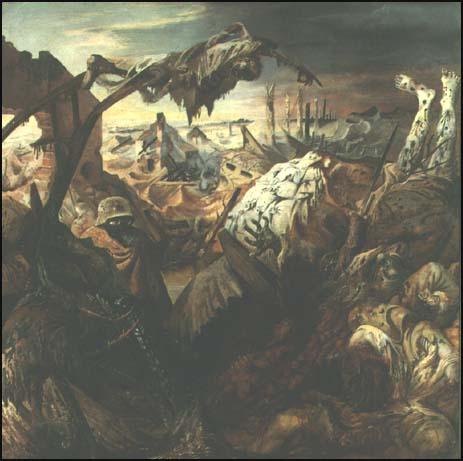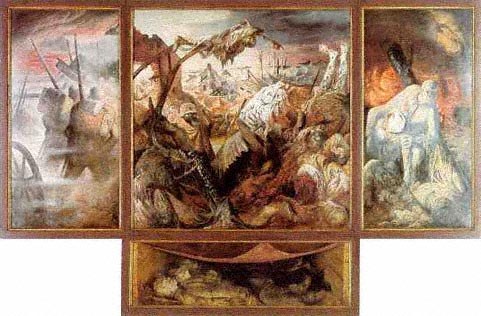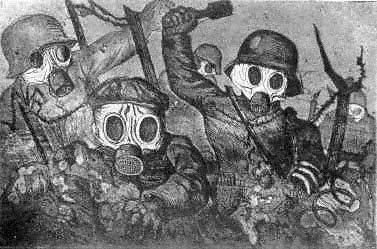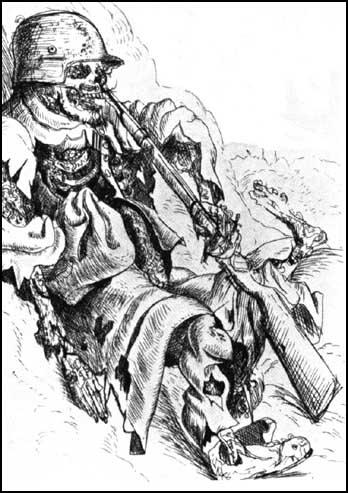World War One, Otto Dix
You know, if one paints someone's portrait, one should not know him if possible. No knowledge! I do not want to know him at all, I only want to see what is there, on the outside. The inner follows by itself. It is mirrored in the visible




b. Dec. 2, 1891, Untermhaus, Thuringia, Ger.d. July 25, 1969, Singen, Baden-Württemberg, W.Ger.
Dix was a German painter and engraver who mixed compassion and Expressionist despair to create works harshly critical of society. He was associated and exhibited with the Neue Sachlichkeit group of painters.
Son of a railway worker, Dix was apprenticed to a decorative artist and received training in Dresden. An Impressionist at first, he experimented with various trends in modern art until he arrived at a mordantly individual style, a nightmarish vision of contemporary social reality. While teaching at Düsseldorf (c. 1922-25) he did such representative paintings and drawings as "Pimp and Girls" and "Two Sacrifices of Capitalism" (the sacrifices are a grotesque prostitute and a defaced former soldier). In 1924 he etched 50 plates, entitled "War," recording its horrors.
Dix served in the German army during World War One as a machine gunner and was present for many major battles in both the eastern and western fronts. It was once observed that Dix would be quietly drawing when the battle would start. He would carefully put his work aside and then gun down hundreds of the enemy. After the fighting was finished, he would return to his drawings as though nothing had happened. Yet it became apparent in his work entitled "War" that he had indeed been changed in a very profound way.
By the end of the war in 1918 Dix had won the Iron Cross (second class) and reached the rank of vice-sergeant-major.
After the war Dix developed left-wing views and his paintings and drawings became increasingly political. Like other German artists such as John Heartfield and George Grosz, Dix was angry about the way that the wounded and crippled ex-soldiers were treated in Germany. This was reflected in paintings such as War Cripples (1920), Butcher's Shop (1920) and War Wounded (1922).
In 1923 Dix's painting, The Trench was purchased by the Wallraf-Richartz Museum. When the painting was exhibited in 1924 its depiction of decomposed corpses in a German trench created such a public outcry that the museum's director, Hans Secker, was forced to resign.
Appointed a professor at the academy in Dresden (1927), Dix was elected to the Prussian Academy (1931). The Nazi regime, however, incensed at his antimilitary works, cancelled these affiliations and barred him from exhibiting. He was jailed in 1939 on a charge of complicity in a plot on Adolf Hitler's life, but in 1945 he was drafted into the home guard army at the age of 53. He was captured and released by the French.
Dix later turned to religious mysticism, as in "Saul and David" (1945) and "Crucifixion" (1946).
Otto Dix died in 1969.

